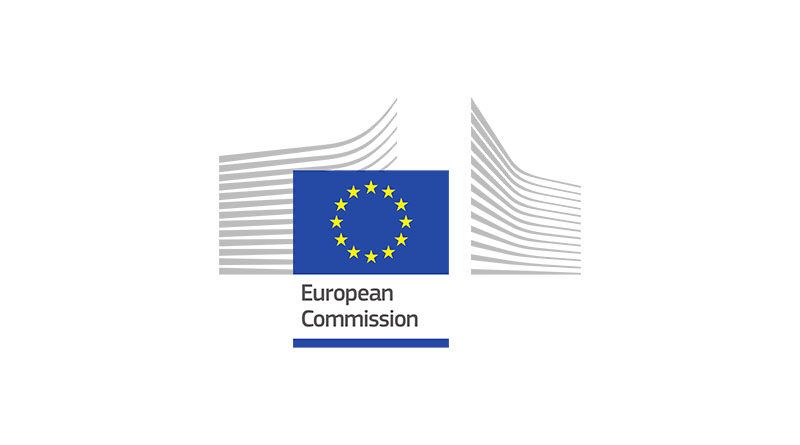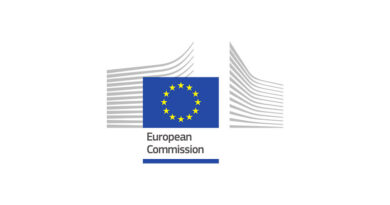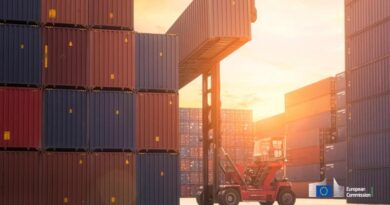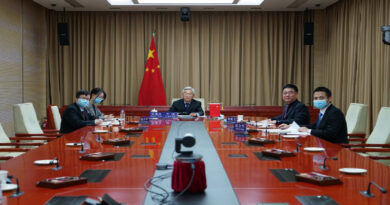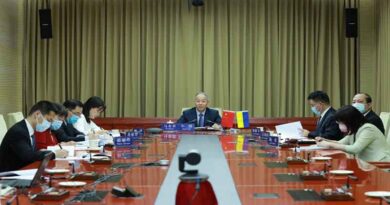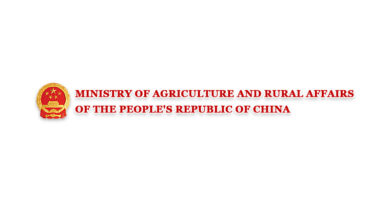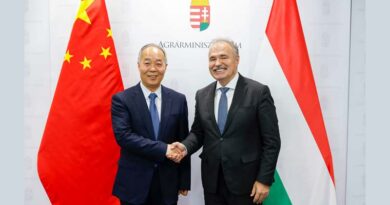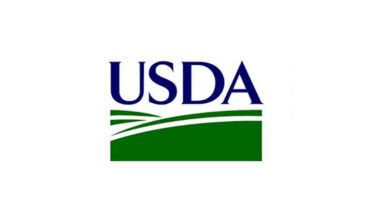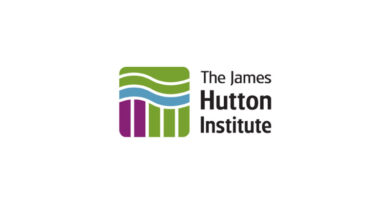Economic study on the cumulative effects of trade agreements on the EU agricultural sector
26 January 2021, Brussels: At the Agricultural Council meeting of 25 January 2021, Commissioner Wojciechowski presented the results of a study on the expected economic effects by 2030 of ongoing and upcoming trade negotiations on the EU agricultural sector. The results are based on a theoretical modelling exercise on the potential economic effects on the agri-food sector, including specific results for some agriculture products after the conclusion of 12 trade agreements. This study represents an update of a study carried out in 2016.
Also Read: MARA Discusses Cooperation Mechanism with China Agricultural University
Why are you publishing this study?
For each trade agreement, the Commission regularly runs impact assessments before the launch of the negotiations, and sustainability impact assessments (SIAs) during their conduct.
But the assessment of trade agreements in isolation does not show the combined, cumulative, impact of the various agreements that the EU is negotiating or signing. A more disaggregated analysis of the agricultural sector than is typically done in the Commission sustainability impact assessments (SIAs) has been a reiterated request.
This is why the European Commission Joint Research Centre (JRC) carried out the first cumulative impact study in 2016. In July 2019, the Commission announced an update of the 2016 cumulative impact study, to reflect the recent conclusion of a series of free trade agreements (with Japan, Vietnam, Mercosur, Mexico) and the update of the EU trade agenda. This was reiterated by Agriculture Commissioner Wojciechowski at his confirmation hearings at the European Parliament.
Which agreements are covered in this study?
The study focuses on 12 trade agreements. Some have already entered into force (Canada, Japan and Vietnam), some have their negotiations already concluded (Mexico and Mercosur), some are under negotiation or are part of the EU trade agenda (Chile, Australia, New Zealand, Indonesia, Malaysia, Philippines and Thailand).
What about trade agreements already in force and not part of the 12 FTAs studied, e.g. with the Republic of Korea or with Ukraine?
Trade agreements that entered into force several years ago (e.g. those with Switzerland, Ukraine, Colombia, Peru and Ecuador or the Republic of Korea) are reflected in the baseline, because their effects are already visible on the EU agri-food trade.
In addition, the impact of the modification of the EU-Ukraine FTA in 2020 to amend the trade preferences for poultry meat was included in the baseline.
The trade agreements that entered into force only recently (Canada, Japan and Vietnam) have been included in the group of 12 FTAs, the impact of which is analysed in the study.
What are the main differences compared to the 2016 study?
Firstly, the studies consider two different sets of FTAs (Chile and Malaysia replace the USA and Turkey) to reflect changes in the EU trade agenda. While in 2016 most of the considered FTAs were not yet concluded (only negotiations with Vietnam and Canada had been concluded), in the current study 5 out of 12 are already concluded (Canada, Japan, Vietnam, Mercosur and Mexico).
Furthermore, this study models the negotiated outcome of concluded FTAs, including the Tariff Rate Quotas (TRQs) granted to respective trade partners. In addition, this study takes into account the UK’s departure from the EU, basing its results on 27 Member States and the time horizon has been extended from 2025 to 2030.
Which scenarios were analysed?
Two scenarios were considered, a conservative and an ambitious one. For concluded negotiations (Canada, Japan, Vietnam, Mexico, Mercosur), the agreement was modelled as per the negotiated outcome (tariff cuts and TRQs) in both scenarios.
For the trade agreements not yet concluded, the two scenarios are based on a full tariff liberalisation for a large majority of tariff lines and on a partial tariff cut for the few remaining lines, which represent the sensitive products. The conservative and the ambitious scenarios differ in terms of the assumptions as regards the percentage of tariff lines that will be fully liberalised under the agreements (97% and 98.5% in the conservative and ambitious scenario respectively) and the size of the tariff cut for the sensitive, not liberalised, products (25% and 50% in the conservative and ambitious scenario respectively).
Why do trade scenarios in the study not include so-called tariff-rate quotas (TRQ) volumes for on-going negotiations?
The actual outcome of agreements under negotiation or envisaged is still unknown. This is particularly true as regards the identification and the treatment of sensitive products, for which reciprocal concessions are usually granted under the form of TRQs. Each negotiation is unique. It would be extremely challenging to speculate about tariff lines to be subject to TRQ concessions, as well as about the possible realistic volumes of those TRQ concessions in each negotiation.
What does the study tell us about the impact of trade agreements in the future development of EU agriculture?
The study confirms that the EU, and the EU agricultural sector, can benefit from the EU trade agenda. This reflects the competitiveness of the EU agricultural sector, and the capacity of the sector to seize opportunities in international markets, where the future growth lies. A balance needs to be found however to guarantee adequate protection for the EU sensitive products, which are of very considerable economic and social value to various Member States. This can be done by limited openings for EU sensitive sectors through tariff rate quotas.
The study provides a very strong argument for a powerful and well-resourced EU Common Agricultural Policy (CAP) for the future. A strong CAP is essential for those who want to export and for those who produce for local markets. It also ensures that we produce in a sustainable way that protects the environment and contributes to tackling the considerable climate change challenge.
What are the key findings of the study?
The study finds that the cumulated implementation of the 12 FTAs would result in a balanced increase in both EU agri-food exports and imports, with a slightly higher increase in exports. This would increase further the net positive EU agri-food trade balance – already projected to remain largely positive in 2030 – by €800 million to €1 billion depending on the scenario considered. Furthermore, impacts on production and producer prices would remain moderate. More specifically, the EU agri-food exports would increase by 2.8% to 3.3% compared to the scenario without FTAs, an increase of €4.7 to €5.5 billion.
More detailed and sector-specific findings are available in the study.
What does the study say about the poultry sector?
For poultry, the study concludes that imports are expected to rise under the conservative and ambitious scenario, respectively by 22% and 29%. However, the expected increase in poultry meat consumption is set to maintain production levels in the EU in 2030.
What are the results for the beef sector?
Compared to the baseline, EU beef imports could increase under both scenarios, by 85.000 tonnes for the conservative scenario and by 100.000 tonnes for the ambitious one. EU beef exports will increase by 25.000 tonnes and 40.000 tonnes for the conservative and ambitious scenario respectively. To put this into context, beef trade balance was 420.000 tonnes between January and November 2020. Producer prices are projected to fall by about 2.4% in both scenarios, with marginal effects on consumption and production due to an increase in exports.
Under the agreement with Mercosur, the EU will allow 99.000 tonnes of beef to enter its market with a 7.5% duty. It will take 5 years until this amount is reached. This shows the effectiveness of deploying tariff rate quotas to target sensitive sectors in trade negotiations, thus mitigating the predicted negative outcomes.
What does the study conclude for the dairy sector?
The study finds that for dairy, exports would increase by 7.3% in 2030 under the ambitious scenario (+ €1.3 billion), and, of that, milk production is set to grow by about 0.2% as a result of favourable prices. For milk producers, this would lead to an additional €890 million to the market in 2030.
What are the results for pork meat?
Regarding the pork meat sector, exports would increase by 8.9% (+ €914 million) in the ambitious scenario, and producer prices would rise by 4.8% combined with a 1% production expansion, raising the value of pork production in 2030 by €2 billion.
What are the other main sector-specific results of the study?
Regarding the sensitive sectors, rice imports to the EU would increase by 2.2% (conservative) and 3.2% (ambitious), resulting in EU rice production and prices declining. As for sugar, total imports would increase by 12 to 13% compared to the baseline.
In addition, for the other sectors, exports of processed agricultural products are set to increase by 3.1% in the ambitious scenario, adding €1.7 billion euros in exports, while exports of wine and beverages could increase by 2% under the same scenario, adding €834 million euros to the market in 2030.
Do the results of the study reflect the impact of the European Green Deal, the EU-UK Trade and Cooperation agreement, and the Covid-19 pandemic?
No. At the time of launching the study, many uncertainties surrounded the implementation of the Green Deal, including the Farm to Fork strategy, the contours of a possible EU-UK trade agreement, and the possible impacts of the Covid-19 pandemic.
In order to finalise the study by the end of 2020 as initially announced, it was decided not to make specific assumptions on the possible impact of the Green Deal and of the Covid-19 pandemic, and to take a purely technical assumption consistent with the withdrawal agreement regarding the future EU-UK relation.
Furthermore, it is important to recall that this is a theoretical exercise which focuses on trade and economic impacts on the agri-food sector, updating a study from 2016. Analysing the climate and environmental effects is a different and complicated exercise, which falls beyond the scope of the study design. These effects are analysed in the SIA (Sustainable Impact Assessment) accompanying each bilateral agreement.
The Green Deal objectives remain a priority for the Commission, including in terms of trade. The EU will engage proactively with all trading partners and make better use of existing and future trade agreements to strengthen food sustainability.
How do you explain the difference in the magnitude of impact between this study and the 2016 one?
Due to the differences between the two studies (FTAs covered, EU27 instead of EU28 etc.), the results are not fully comparable.
The impact on the sensitive sectors is generally far lower than in the 2016 study, particularly in the case of beef. This can be explained by the modelling of the actual concluded agreements (including TRQs), notably the one with Mercosur which entails the largest impacts, rather than modelling a theoretical scenario that would consider a tariff cut of up to 50% with no limit in volumes for sensitive products.
The only sensitive sector where projected impacts remain severe is rice. This result is essentially driven by the impact of the agreement with Thailand for which a 25% to 50% tariff cut has been applied to rice, with no limit in volumes. The actual impact would be smaller if a TRQ would be granted instead of a tariff reduction with unlimited volumes.
What about results at Member State or regional level?
Due to constraints linked to the choice of the models, results are only available for the EU as a whole.
Why are sanitary and phytosanitary barriers (SPS) not being modelled? If they were modelled, should we expect larger gains for EU exports, or further challenges for EU imports?
It is not yet possible to quantify SPS barriers in contemporary economic models with a robust methodology. This was already the case in the 2016 study.
However, improved SPS conditions negotiated in the trade agreements concluded by the EU do facilitate EU exports. Through the EU trade agreements, agreed or being negotiated, the Commission pursues the recognition by third countries of the EU’s harmonised SPS framework. This should ultimately lead to simplified and faster approval procedures for interested Member States or groups of Member States and the setting of non-discriminatory, common exports conditions for all Member States.
When it comes to EU imports, the EU never compromises on its high standards of consumer protection in any trade agreement, which remain the same for all imports irrespective of the preferential arrangement in place. For example, it has never authorised so-called growth promoters or modified its science-based GMO approval process. These legal requirements for EU imports remain in place (e.g. CETA, Mercosur), even when tariffs are removed or reduced.
What is the methodology of the study?
The study provides the expected changes in trade flows following the implementation of a set of free trade agreements (FTAs) compared to a reference scenario, namely the trade projected in 2030 by the 2019-2030 Agricultural Outlook.
For reasons of comparability and consistency with the cumulative study published in 2016, the Commission services made the explicit choice to use a methodology and policy assumptions that are as close as possible to the one used in the previous study. The same models were used: a computable general equilibrium (CGE) model (MAGNET) and a partial equilibrium model (Aglink-Cosimo). A similar structure in trade scenarios were considered for trade agreements under negotiations, with a plausible yet theoretical outcome considered when it comes to the number of tariff lines liberalised and the treatment of non-liberalised agricultural products, in order not to prejudge the final result of the negotiations.
In addition, the recent evolutions in the European political situation and in trade policy were taken into account. The study refers to the EU-27, following the withdrawal of the UK from the EU. The outcome of trade agreements concluded have been reflected as such in the models (agreements with Canada, Japan, Vietnam, Mercosur and Mexico). No trade agreement with the United States (TTIP) or with Turkey are considered (contrary to the 2016 study) in line with the current EU trade agenda.

